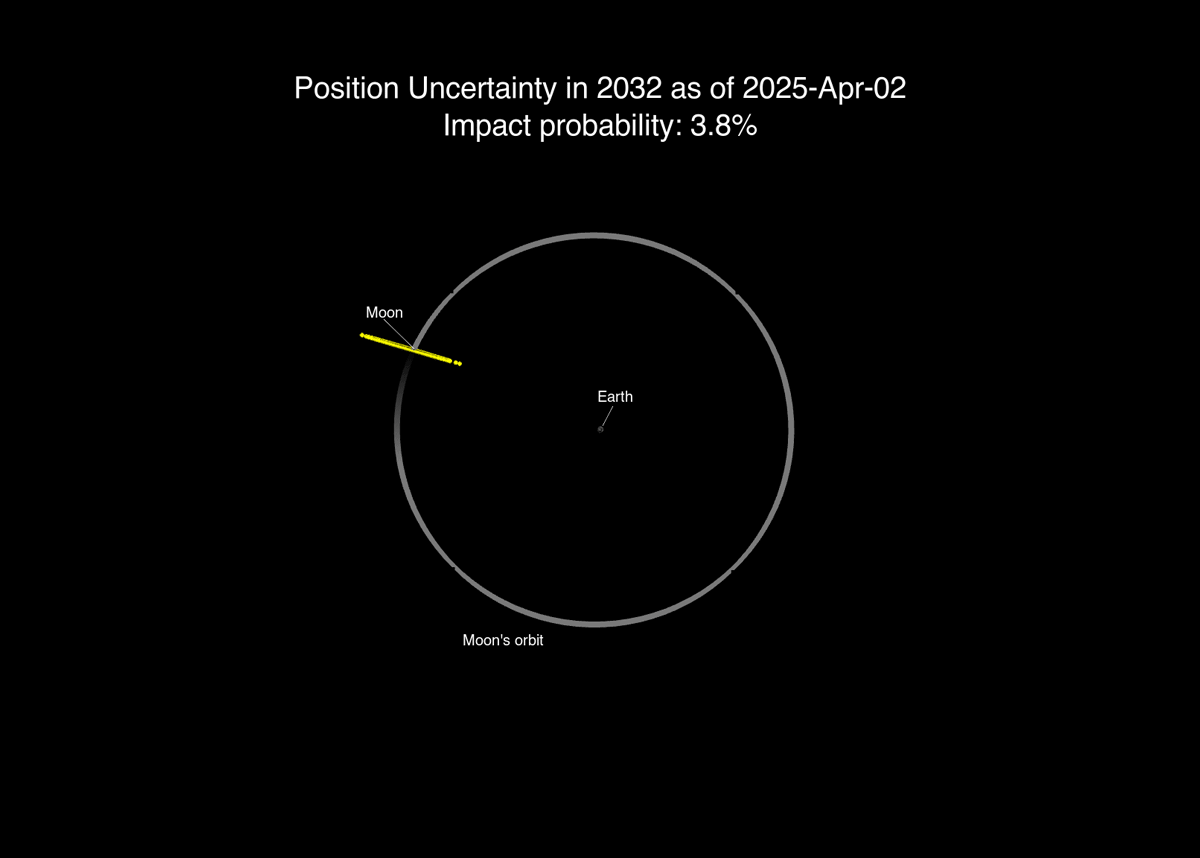An asteroid discovered last year and briefly thought to be a threat to Earth has a 1-in-23 chance of hitting the Moon, according to updated NASA estimates based on JWST data.
Asteroid 2024 YR4 was first discovered on December 27, 2024. Astronomers have been keeping a close eye on it ever since, as initial observations showed around a 1 percent chance that it could collide with Earth on December 22, 2032. Follow-up observations of the asteroid briefly showed a higher chance of the asteroid making an impact. At 3.1 percent, it briefly became considered the most dangerous space object since tracking began.
Thankfully, as repeatedly predicted by astronomers during that slightly nervous time, as more observations came in, the chances of impact with Earth fell dramatically, and now stand at around 0.004 percent.
But the Moon may not be so lucky.
“The odds of an impact into the Moon have always been there. It’s been lower at that time because the Earth [was] a bigger target,” planetary scientist Dr Andrew Rivkin, from Johns Hopkins University in Maryland, told IFLScience back in April.
“The way that the orbit improved made the position move away from the Earth, but it moved toward the Moon. So there’s like almost a 4 percent chance it’s going to hit the Moon. That means there’s a better than 96 percent chance it’s going to miss the Moon, but if it did hit the Moon, it really would be pretty spectacular!”
Back then the object had a 3.8 percent chance of hitting our natural satellite, but following further observations by JWST and analysis by NASA’s Center for Near-Earth Object Studies at the agency’s Jet Propulsion Laboratory (JPL) in Southern California, NASA have updated the chance of impact with the Moon on December 22, 2032, to 4.3 percent. On that date, it will pass around 0.00007 Astronomical Units (AU) of the Moon, with 1 AU being the distance between the Earth and the Sun.

Diagram showing the position uncertainty of asteroid 2024 YR4.
Image credit: NASA/JPL Center for Near-Earth Object Studies
While an Earth impact was an intimidating prospect, astronomers are a bit more excited by the prospect of it slamming into our companion space rock. In short, it would be pretty spectacular.
“It would be visible from Earth and there would even be new lunar meteorites that would arrive on Earth (nothing dangerous), but there is no guarantee,” Richard Moissl, the head of ESA’s Planetary Defence Office, told IFLScience back in February. “Definitely, a new observable moon crater would be the outcome!”
NASA stresses that the asteroid hitting the lunar surface would not alter the Moon’s orbit. Right now, the asteroid is too far from human telescopes to get a good look at it, but we will get another look at it before it makes its close approach in 2032.
“Asteroid 2024 YR4 is now too far away to be observed with space-based or ground-based telescopes,” NASA added in a statement. “NASA plans to make further observations when the asteroid’s orbit around the Sun brings it back close to Earth in 2028.”
Source Link: NASA Observations Suggest Asteroid 2024 YR4 Now Has 1-In-23 Chance To Hit The Moon In 2032